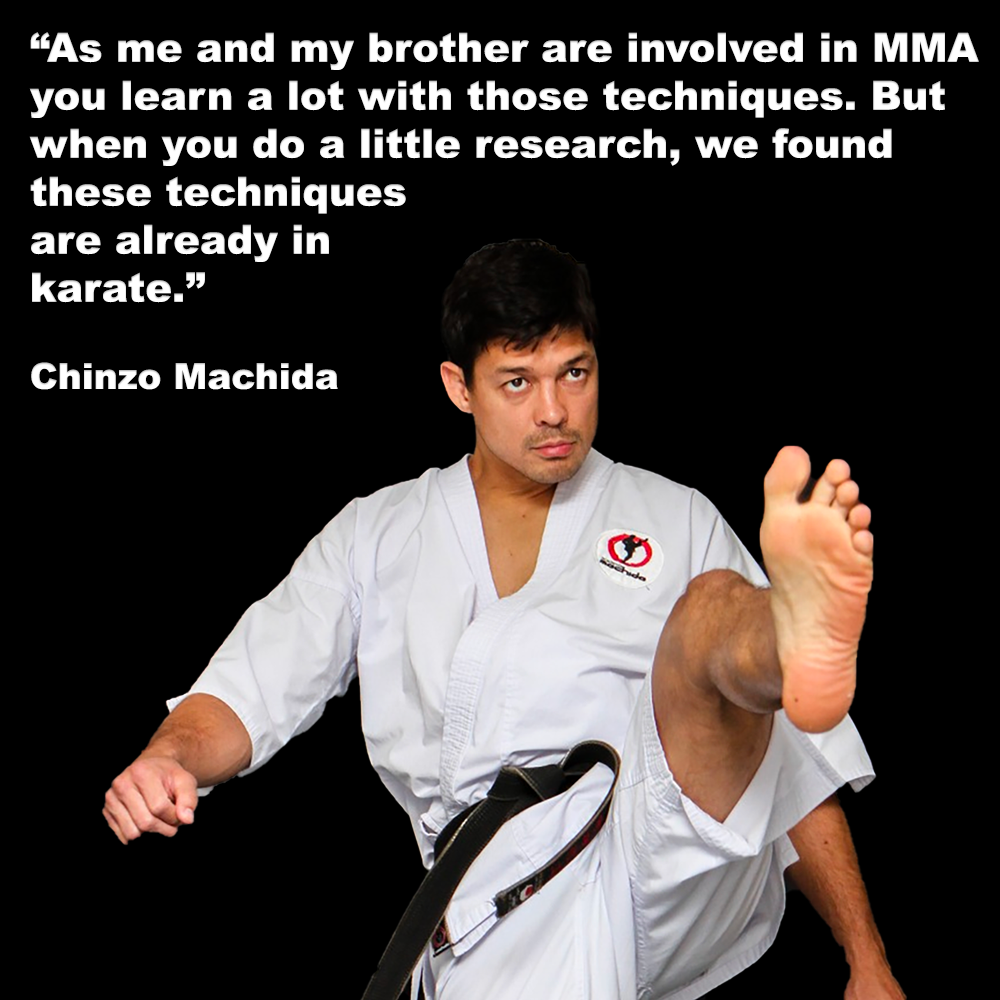
Many dismissive comments I receive state; 'Good luck fighting with your kata'.
Posted by ADAM CARTER on MAR 20, 2024

Many dismissive comments I receive state; 'Good luck fighting with your kata'.
(2 minute 55 second read)
Many dismissive comments I receive state; “Good luck fighting with your kata”.
Kata, often viewed as a choreographed routine, for passing a grade, showing no relation to actual combat.
“The other day I posted a video where I was applying the uppercut technique and a person in his comment didn’t recognize that was a karate technique.” – Chinzo Machida
Historically, kata served as a way of preserving combative knowledge for future generations. But many of the kata applications you will see today, are fundamentally flawed!
Why?
Because most people who analyze kata, use karate-ka vs karate-ka style attacks and defenses from an unrealistic distance.…. not very realistic.
Let’s explore the possibility of reshaping some of the perspective on kata.
The original concept of kata was a way for a practitioner to remember sequences of drills, to protect them in civilian violence.
You do NOT fight with a kata following the sequence of techniques from beginning to end.
Let me try to explain to the non believers using modern methods.
Your coach asks you to do a combination on the heavy bag…… Left jab, right cross, followed by a left hook.
He then tells you to reverse those techniques….. Right jab, left cross, followed by a right hook.
Now he wants you to mix it up….. Right jab, right cross, left hook….. and move around the bag.
Your coach then asks you to throw in an elbow, a knee, a low kick – you now mix it up and move around the bag in numerous different ways.
How do you remember all this?
Simple. You keep practicing those techniques as a series of combination movements.
What do you have?
The Japanese would call this a “kata”.
Kata refers to any basic routine, or pattern of behavior. In the Japanese language the word “kata” doesn’t just mean a martial arts “form”, it’s also a frequently-used suffix meaning “way of doing” – anything essentially.
In application (or a fight if that fits your narrative better), the movements within the kata do not need to be followed one by one to the end. You can extract any number of movements or techniques – just one or two if necessary – in any order you want, for the relevant scenario.
The karate of today, had a reinvention as a mainly sporting contest – consensual fighting.
This reinvention, from the early 1900’s, had to appeal to a younger generation. A more modern approach was needed to keep karate from dying out.
Then in the 1930’s everything became stylized. Techniques, kata, kihon, etc. Everything had to have a name, and often the nomenclature used may have been misleading.
For decades, karate has been seen as a consensual fighting art. Two karate-ka agreeing to fight each other, showing virtually no relation to real-world combat.
This is NOT why kata was originally created.
Remember the left jab, right cross, left hook? They are present in kata! Throws, takedowns, the clinch, grappling, movement and distance control, etc, etc, it’s all there, presented in a way your “coach” at the time, wanted you to remember those movements.
The kata was used to help a practitioner remember sequences and principles when not practicing with a partner. It was never meant to be just a solo performance.
It’s important to remember that the sequence of movements in the kata is NOT teaching you how to fight – in application (a fight), you do not have to follow the kata from beginning to end.
So, the next time someone says, “Good luck fighting with your kata,” remember: kata isn’t about fighting with all its moves. It’s about understanding its principles and applying relevant techniques to any situation, just like your coach’s left jab, right cross, left hook combination.
“As me and my brother are involved in MMA you learn a lot with those techniques. But when you do a little research, we found these techniques are already in karate.” – Chinzo Machida
![]() Photo Credit: with courtesy of Chinzo Machida
Photo Credit: with courtesy of Chinzo Machida
